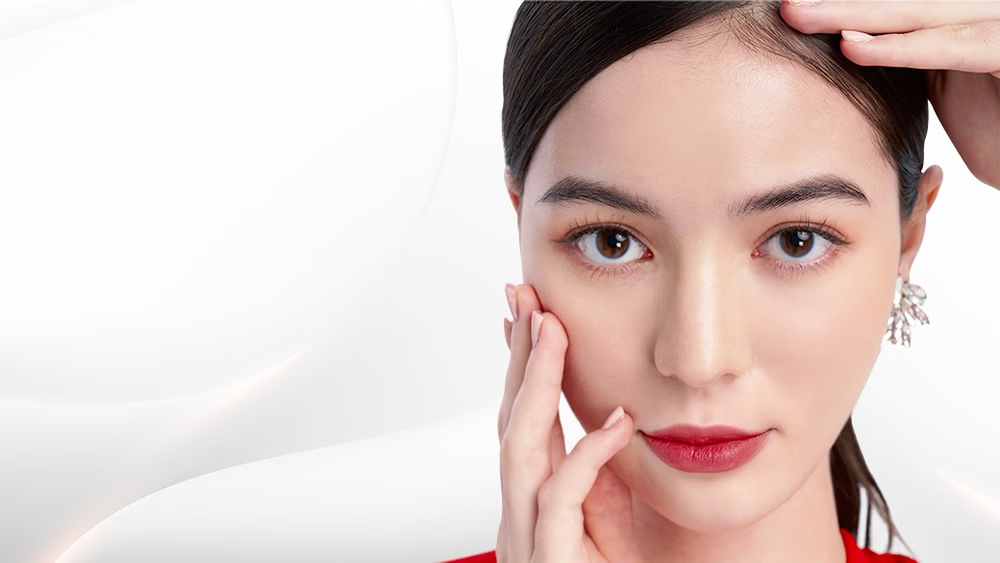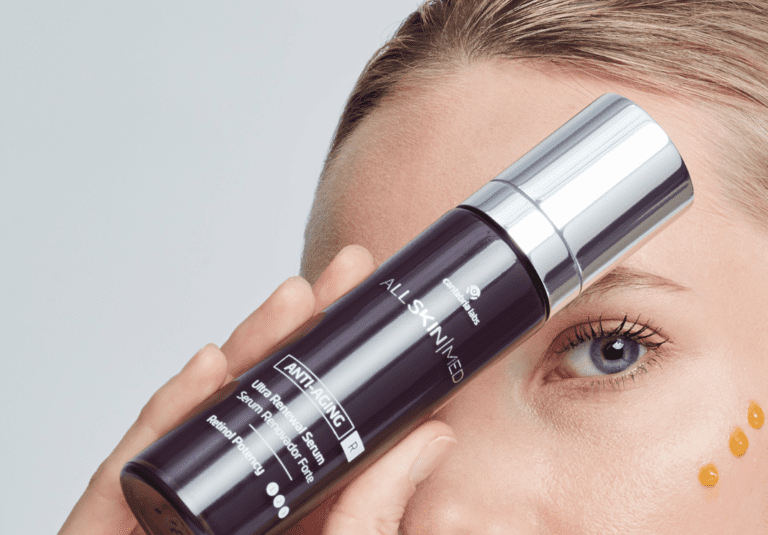Skin
Plum Beauty Oil Le Prunier 1 oz:
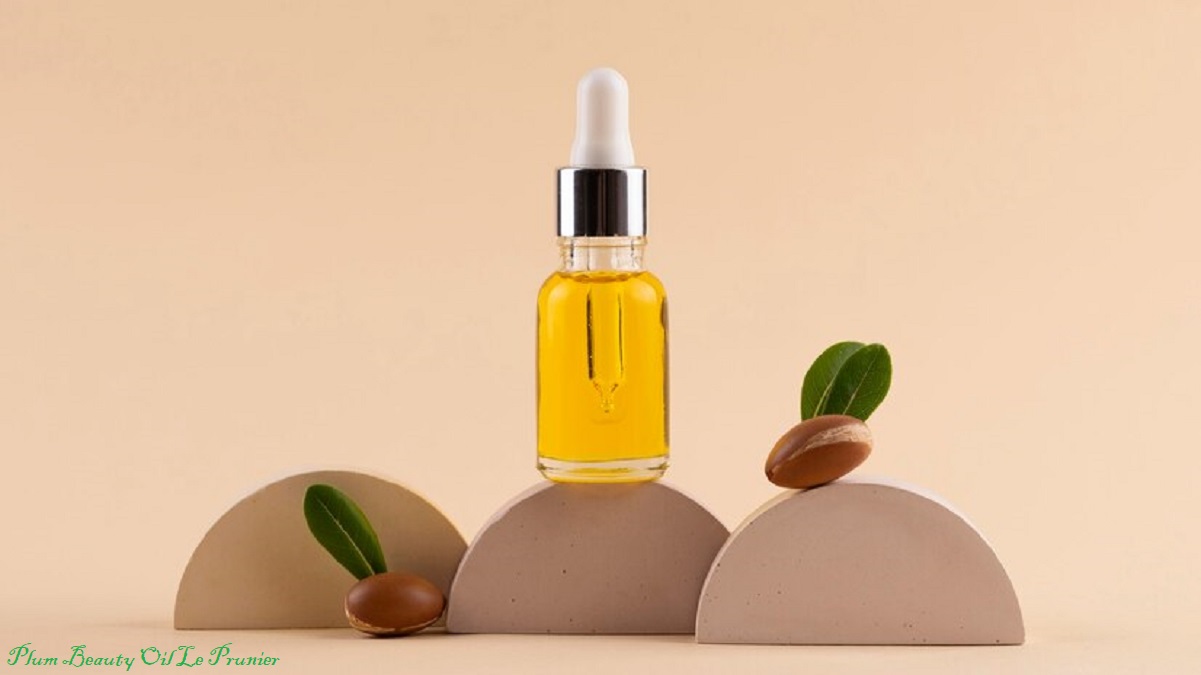
In the ever-evolving world of skincare, finding the perfect beauty oil might feel like hunting for a needle in a haystack. Enter Plum Beauty Oil Le Prunier 1 oz, a delicious, nutrient-packed elixir that promises to improve your skincare routine. What, nevertheless, distinguishes this oil in the crowded beauty oil market?
The Origins of Plum Beauty Oil
History of Le Prunier
Le Prunier has a legacy as well as a brand. Le Prunier, founded by the Taylor sisters, who come from a long line of plum farmers, offers centuries of experience. They first learned about the unrealized potential of plums in skincare on a family farm in California.
Sustainable Farming Practices
At the core of Le Prunier’s business is sustainability. Because organic farming methods are used to raise the plums, there are no hazardous chemicals or pesticides in the oil. This dedication to sustainability ensures that you’re applying the cleanest ingredients to your skin while also helping the environment.
Benefits of Plum Beauty Oil
Hydration and Moisturization
Plum Beauty Oil is a powerhouse of hydration. Its lightweight formula penetrates deep into the skin, providing long-lasting moisture without clogging pores. Whether you have dry, oily, or combination skin, this oil works wonders in keeping your skin supple and hydrated.
Anti-Aging Properties
Say goodbye to fine lines and wrinkles! Rich in vitamins A and E, Plum Beauty Oil helps to boost collagen production and improve skin elasticity. The result? A youthful, radiant complexion that defies the signs of aging.
Rich in Antioxidants
Antioxidants are your skin’s best friend, and Plum Beauty Oil is packed with them. These powerful compounds protect your skin from environmental stressors like pollution and UV rays, reducing the risk of premature aging and keeping your skin looking fresh and vibrant.
Key Ingredients
Prunus Domestica (Plum) Seed Oil
The star of the show is Prunus Domestica or plum seed oil. This ingredient is known for its high fatty acid content, which helps to nourish and repair the skin barrier. It’s also rich in polyphenols, which have anti-inflammatory and skin-soothing properties.
Nutrient Profile
Plum Beauty Oil boasts a rich nutrient profile, including vitamins C, A, and E, as well as essential fatty acids like linoleic and oleic acid. These nutrients work synergistically to hydrate, heal, and protect your skin.
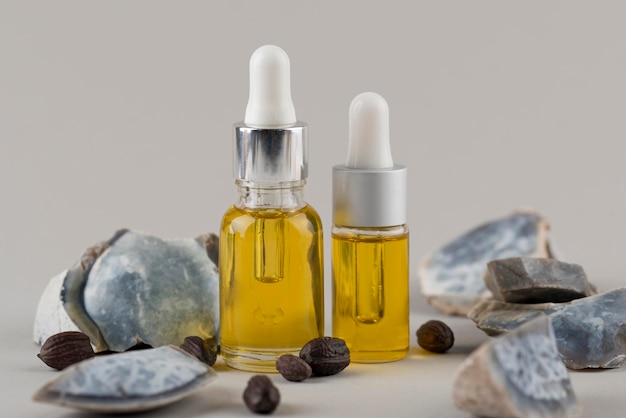
How to Use Plum Beauty Oil
Daily Skincare Routine
It’s easy to incorporate Plum Beauty Oil into your daily regimen. Just apply a few drops to your face and neck, using your fingertips to gently massage it in. Then, follow up with your favorite moisturizer to seal in the moisture.
Special Treatments and Tips
Add a few drops of Plum Beauty Oil to your evening moisturizer for a potent overnight treatment, or mix it with your foundation for an additional boost and glossy finish. It can also be applied as a nourishing therapy for damaged hair ends or as a cuticle oil.
Who Can Use Plum Beauty Oil?
Suitable Skin Types
One of the great things about Plum Beauty Oil is its versatility. It’s suitable for all skin types, from dry to oily. Even people with sensitive skin can benefit from its soothing, non-irritating composition.
Considerations for Sensitive Skin
Before adding any new product to your routine, it’s usually a good idea to run a patch test if you have really sensitive skin. To check if there is any irritation, apply a small quantity to your wrist or behind your ear and wait a day.
Comparing Plum Beauty Oil to Other Oils
Plum vs. Argan Oil
Both oils are fantastic for the skin, but Plum Beauty Oil has a lighter texture, making it ideal for those who find argan oil too heavy. Additionally, plum oil contains more polyphenols, offering enhanced antioxidant protection.
Plum vs. Jojoba Oil
While jojoba oil is well known for its capacity to replicate the natural sebum produced by the skin, Plum Beauty Oil offers an even more potent nutrient profile and higher anti-aging properties.
Plum vs. Rosehip Oil
Rosehip oil is recognized for its regeneration abilities, while Plum Beauty Oil offers more balanced hydration and is less likely to produce breakouts. It also has a higher concentration of antioxidants, making it a superior choice for anti-aging.
Customer Reviews and Testimonials
Real-life Experiences
Customers rave about the transformative effects of Plum Beauty Oil. Many report significant improvements in skin texture and tone, with some even noting a reduction in acne and blemishes.
Before and After Stories
As they say, the deed is evident in the pudding: happy customers before and after pictures demonstrate a discernible improvement in the look of fine wrinkles, dark spots, and general skin brightness.
Where to Buy Plum Beauty Oil Le Prunier 1 oz
Online Retailers
Available from several online retailers, such as Sephora, Amazon, and the official Le Prunier website.
In-store Options
Select beauty stores and upscale boutiques carry Le Prunier products for those who would rather purchase in person. Check the Le Prunier website for a store locator.
FAQs About Plum Beauty Oil
Shelf Life and Storage
Plum Beauty Oil has a shelf life of around 12 months. To enhance its lifetime, store it in a cool, dark spot away from direct sunlight.
Ethical and Cruelty-Free Status
Le Prunier is committed to ethical and cruelty-free practices. Their products are never tested on animals, and they use eco-friendly packaging whenever possible.
Compatibility with Other Skincare Products
Plum Beauty Oil is highly compatible with other skincare products. It can be layered under serums and moisturizers or mixed with foundation and other makeup products.
DIY Skincare Recipes Using Plum Beauty Oil
Face Masks
Combine yogurt, honey, and Plum Beauty Oil to make a calming and hydrating face mask. After applying to your face, rinse with warm water after 15 minutes.
Hair Treatments
Coconut oil and Plum Beauty Oil together provide a deep conditioning treatment for hair. After applying it to dry hair and letting it sit for at least half an hour, rinse it off with your normal shampoo.
Body Scrubs
Combine Plum Beauty Oil with brown sugar and a few drops of your preferred essential oil to make an opulent body scrub. After giving your skin a gentle massage, take a shower to rinse it off.
The Science Behind Plum Beauty Oil
Studies and Research Findings
According to recent research, plum seed oil is a very useful tool for enhancing the hydration and suppleness of skin. Because of its high antioxidant concentration, free radicals are slowed down, preventing damage to the skin.
Dermatologist Insights
Dermatologists laud Plum Beauty Oil for not clogging pores due to its non-comedogenic qualities. They also emphasize how soft it is, so even the most delicate skin types can use it.
Sustainability and Ethical Practices
Eco-friendly Packaging
Le Prunier is a committed environmentalist. Their goods are packaged using recyclable materials to be environmentally friendly. Their shipping procedures reflect this dedication, using as little plastic and other non-biodegradable material as possible.
Fair Trade Practices
Le Prunier ensures fair wages and moral working conditions by collaborating closely with nearby farms and communities. You are assisting a company that respects both people and the environment by purchasing their products.
Common Misconceptions
Myths vs. Facts
A few common misunderstandings exist regarding beauty oils, such as the idea that they will cause oiliness on your skin. Oils like Plum Beauty Oil can support the natural oil production balance of your skin.
Addressing Concerns
Some are concerned about applying oils on skin that is prone to acne. But because Plum Beauty Oil doesn’t clog pores or trigger outbreaks, its non-comedogenic nature makes it a safe option for people with acne.
Conclusion
The 1 oz. Plum Beauty Oil Le Prunier is revolutionary in the skincare industry. Given its abundance of nutrients, ability to hydrate, and anti-aging advantages, it’s no surprise that this oil has become a beauty industry staple. Plum Beauty Oil is a natural option that works wonders for your skin, whether you want to hydrate, protect, or renew it.
FAQs
Can Plum Beauty Oil be used on oily skin?
Plum Beauty Oil works well on all skin types, even those with oily complexion. Because of its thin consistency, oil production is balanced without clogging pores.
Is Plum Beauty Oil safe for sensitive skin?
Of course! Because Plum Beauty Oil is non-irritating and soothing, it’s a great choice for skin that is sensitive. But it’s usually a good idea to start with a patch test.
How often should I use Plum Beauty Oil?
Use Plum Beauty Oil twice a day, once in the morning and once at night, as part of your usual skincare regimen for optimal effects.
Can I use Plum Beauty Oil with other skincare products?
The answer is that Plum Beauty Oil works well with other skincare products. For a dewy finish, blend it with your foundation or apply it beneath serums and moisturizers.
Where can I purchase Plum Beauty Oil Le Prunier 1 oz?
Plum Beauty Oil Le Prunier 1 oz is available for purchase at a few beauty shops and boutiques, as well as online at the official Le Prunier website, Amazon, and Sephora.
Skin
How to Use Global Beauty Care Retinol Skin Cream
Skin
The Rarest Type of Nose: An Exploration of Distinction

The nose, a centerpiece of human physiognomy, stands as a hallmark of individual identity. While its primary functions—facilitating respiration and detecting aromas—are universal, the diversity in nasal forms is both staggering and fascinating. Some nose shapes dominate populations, while others are so rare they elicit wonder. But what, precisely, constitutes the rarest type of nose? Let us traverse the realms of anatomy, genetics, and cultural resonance to uncover the answer.
Anatomy and Variation: The Underpinnings of Nasal Uniqueness
Before delving into the extraordinary, it’s essential to comprehend the fundamental structure of the nose and the elements shaping its distinctiveness.
Structural Components of the Nose
- Nasal Bones: Form the upper bridge, lending foundational rigidity.
- Cartilage: Confers flexibility and shapes the tip and lateral contours.
- Nasal Septum: Divides nostrils, ensuring balanced airflow.
- Soft Tissue: Adds curvature and dynamic movement to the nose.
These elements, influenced by heredity, ethnicity, and environment, orchestrate a nose’s architecture.
Determinants of Nasal Morphology
- Genetic Blueprint: Nasal shape emerges from an intricate genetic interplay.
- Ethnic Adaptation: Ancestral climates mold nasal forms; slender noses prevail in frigid zones, while wider noses dominate humid locales.
- Age and Trauma: Time and injuries can subtly transform nasal aesthetics.
Recognizing Familiar Nose Types
Common nasal shapes abound across global demographics. Understanding these helps us appreciate the uniqueness of rarer forms.
- Roman Nose: Distinguished by a prominent, gently arched bridge; often depicted in classical sculpture, prevalent in European lineages.
- Button Nose: Petite and rounded with a slightly uplifted tip, often evoking youthful charm.
- Straight Nose: A linear bridge devoid of dips or curves, revered for its symmetry.
- Nubian Nose: A broad base coupled with an elongated bridge, celebrated within African diasporas for its striking allure.
- Hawk Nose: This shape exudes boldness, featuring a pronounced downward curve reminiscent of a raptor’s beak.

A rarity in Nasal Forms
Rare nasal configurations arise from genetic anomalies, evolutionary adaptations, or developmental peculiarities.
Noteworthy Rare Noses
- Fleshy Nose: Bulbous with pronounced soft tissue, less prevalent than streamlined shapes.
- Celestial Nose: Marked by a concave bridge and uplifted tip, its rarity lies in the pronounced upward tilt.
- Pinched Nose: A slim and tapered form, occasionally the result of surgical intervention or specific genetic traits.
The Pinnacle of Rarity: Uncommon Combinations
The rarest nose transcends individual traits, merging several uncommon attributes into one visage. For instance, a celestial nose paired with a profoundly sharp tip and exaggerated curvature is exceptionally unusual.
Genetic Conditions Yielding Unique Noses
- Binder Syndrome: Leads to an underdeveloped nasal bridge.
- Pierre Robin Sequence: Affects facial structure, creating recessed nasal features.
Cultural Perceptions of Rare Noses
Societal lenses magnify the significance of rare nose shapes, attributing symbolic and aesthetic value across epochs.
- In Media and Fashion: Unique noses captivate audiences, positioning their bearers as icons of individuality.
- Historic Standards: Ancient Egyptians prized slender noses for their perceived elegance, while Roman society lauded aquiline noses as emblems of authority.
- Contemporary Movements: Social media champions diversity, fostering an appreciation for distinctive features.
Genetics: The Architect of Nasal Rarity
Heredity and Evolution
- Inheritance Patterns: Unusual features often emerge from recessive traits passed discreetly through generations.
- Evolutionary Influence: Narrow noses, adapted for frigid air, and broad noses, efficient in humid climates, showcase humanity’s adaptability.
Surgical Crafting of Rare Noses
Modern rhinoplasty offers the possibility of replicating rare nasal forms, albeit with caution.
- Rhinoplasty Trends: Precision is paramount when emulating rare features.
- Balancing Risks: Overcorrection risks functional issues, underscoring the need for moderation.
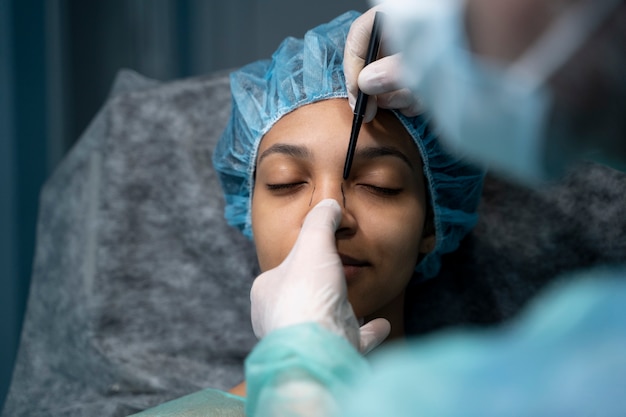
Embracing Nasal Uniqueness
Whether common or extraordinary, the nose is a personal signature. Celebrating its individuality fosters self-acceptance and underscores humanity’s rich tapestry of diversity.
Conclusion
The rarest nose type defies singular definition, arising from a confluence of exceptional traits shaped by heredity, environment, and cultural perceptions. Its rarity enriches the spectrum of human beauty, reminding us that uniqueness is a virtue worthy of reverence.
FAQs
- What governs nasal shape?
Hereditary factors, cartilage structure, and environmental influences shape nasal appearance. - Can nasal shape evolve over time?
Yes, age and physical trauma can alter its form. - Are rare noses universally admired?
Attractiveness is subjective; rare noses often gain admiration for their distinctiveness. - Can surgery replicate rare shapes?
Yes, but achieving natural-looking results requires meticulous precision. - What’s the most prevalent nose type?
Button and Roman noses are among the most ubiquitous globally.
Skin
Eczema and Psoriasis on the Feet: Visuals, Root Causes,

Eczema and psoriasis stand among the most prevalent skin disorders affecting individuals across the globe. When these conditions manifest on the feet, they can cause significant discomfort and pose aesthetic dilemmas. This article delves into the origins, manifestations, and remedial options for eczema and psoriasis of the feet, supplemented by illustrative depictions.
Understanding Eczema: How It Manifests on the Feet
Defining Eczema and Its Underlying Triggers
Eczema, medically termed atopic dermatitis, is a chronic dermatological ailment characterized by inflammation, redness, and relentless itching. Common catalysts include allergic reactions, environmental irritants, and inherited predispositions.
Symptoms of Eczema on the Feet
- Parched, fissured skin.
- Reddened and swollen areas.
- Persistent itch, often intensifying nocturnally.
- Formation of vesicles in severe instances.
Visual Representations of Eczema on Feet
Individuals afflicted may observe inflamed, reddened patches or blistering. Imagery frequently aids in accurate visual diagnosis.
Psoriasis: A Chronic Autoimmune Condition with Distinctive Features
What Defines Psoriasis?
Psoriasis emerges as a chronic autoimmune disorder, spurring the overproduction of epidermal cells. This surplus accumulates, forming plaques frequently observed on the feet.
Manifestations of Psoriasis on the Feet
- It thickened, flaky skin.
- Reddish plaques are often veiled with silvery scales.
- Painful fissures or cracks in the skin.
- Nails may exhibit changes indicative of nail psoriasis.
Visual Evidence of Psoriasis on Feet
Typical depictions reveal heavily scaled skin with a silver-tinged overlay, highlighting the distinctiveness of this condition.

Differentiating Between Eczema and Psoriasis
Key Visual Contrasts
- Eczema: Features redness, oozing vesicles, and pronounced itchiness.
- Psoriasis: Exhibits dry, flaky plaques with silvery layers.
Diverging Etiologies
Eczema is often rooted in allergic hypersensitivity, whereas an autoimmune response drives psoriasis.
Treatment Modalities for Eczema and Psoriasis
Managing Eczema
- Moisturizing Agents: To counteract dryness.
- Topical Corticosteroids: For reducing inflammation.
- Allergen Avoidance: Identifying and steering clear of triggers.
- Natural Remedies: Coconut oil or colloidal oatmeal baths for soothing relief.
Treating Psoriasis
- Topical Applications: Corticosteroids or Vitamin D derivatives.
- Phototherapy: Exposure to UV light.
- Systemic Medications: Biologics or oral therapies for advanced cases.
- Home Solutions: Aloe vera or saline baths to ease symptoms.

Preventive Strategies for Eczema and Psoriasis on Feet
Skincare Routine
- Daily hydration with emollients.
- Use of gentle cleansers to avoid irritation.
Avoidance of Triggers
- Wearing breathable footwear.
- Mitigating stress, a known exacerbator of psoriasis.
Conclusion
Eczema and psoriasis affecting the feet can profoundly impact the quality of life. Through precise diagnosis, bolstered by visual indicators, and effective treatments, sufferers can find substantial relief. Consistent skin care and proactive avoidance of known triggers are indispensable in preventing recurrences.
FAQs
- How does foot eczema differ from fungal infections?
Eczema often presents as redness and dry skin, while white patches and a pungent odor typically mark fungal infections. - Can children develop eczema or psoriasis on their feet?
Yes, eczema is especially common among younger individuals. - What is the typical duration for treating foot psoriasis?
Treatment timelines vary based on severity, with chronic cases requiring long-term management. - Is it possible to have both eczema and psoriasis concurrently?
Although rare, it is feasible to experience both conditions simultaneously, necessitating distinct treatment plans. - Is there a definitive cure for psoriasis?
While psoriasis cannot be eradicated, its symptoms can be effectively managed through appropriate interventions.
-

 Skin9 months ago
Skin9 months agoNatural Oil-Free Face Moisturizer Reviews & Buyers Guide
-

 Hair9 months ago
Hair9 months agoDoes a Flat Iron Kill Lice? Fact or Myth?
-
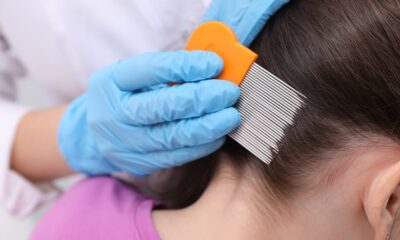
 Hair3 weeks ago
Hair3 weeks agoDoes a Flat Iron Kill Lice? Fact or Myth?
-

 Skin8 months ago
Skin8 months agoAbout Face Beauty: Tips for Enhancing Your Natural Beauty
-

 Hair9 months ago
Hair9 months agoFunction of Beauty: Personalized Hair Care for Your Unique Needs
-
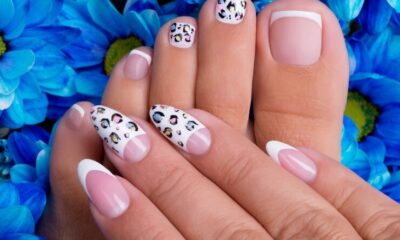
 Skin8 months ago
Skin8 months agoBeautiful Nails: Tips and Tricks for Healthy and Gorgeous Nails
-

 Hair9 months ago
Hair9 months agoTitanium Flat Iron vs. Ceramic
-

 Hair9 months ago
Hair9 months agoHow to Curl Your Hair with a Flat Iron for Beginners

